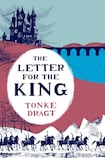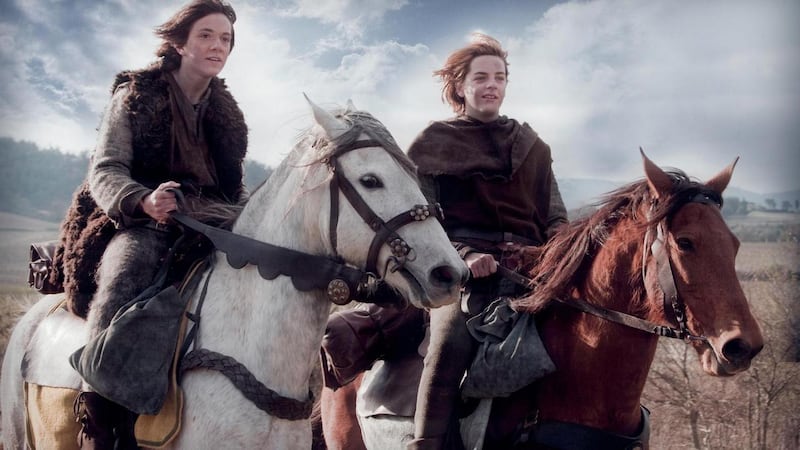
Tiuri is 16 years old and has served his king as a squire. But now it is time to become a knight, and he, along with four other boys, has been selected for this great honour, about to be bestowed by King Dagonaut. It only happens once every four years, at midsummer.
The chosen boys must fast for 24 hours and spend the night before the ceremony, which is part of a great festival, in silent contemplation, kneeling on the floor of a small chapel beyond the city walls.
First published in Dutch in 1962, The Letter for the King draws on the major themes of medieval literature, most notably the notion of a heroic quest and a life lived by the chivalric code of behaviour. Instead of a seasoned knight setting off to win his lady's hand, however, Tonke Dragt's hero is a nobleman's son who undertakes a hazardous mission that will cost him his knighthood.

Dragt, who was born in Jakarta in 1930 and spent most of her childhood in Indonesia, was interned with her family by the Japanese during the second World War. She apparently began writing while living in the prisoner-of-war camp. The experience of watching the faces of her captors may have had a lasting impression on her, as her young hero notices facial expressions and stares closely into the eyes of the people he encounters in a bid to assess their intentions.
On settling in the Netherlands with her family after the war she studied art and eventually taught drawing.
Old-style adventure
This is a fast-moving, wonderful old-style adventure written in a solemn, deliberate and descriptive prose. Dragt appears to have been thematically, rather than stylistically, influenced by the work of the great JRR Tolkien. Her title – at least in English – even reflects the rhythm of The Lord of the Rings (1954-1955). As in Tolkien, good and evil are consistently pitched against each other; she also explores loyalty, trust and secrecy. Just as Frodo sets off entrusted with the ring that he feels obliged to destroy, Tiuri has a letter to deliver. Frodo's ring possesses evil powers; the letter that Tiuri is carrying contains crucial information intended for King Unauwen. Interested parties seek the letter and will kill the boy to get it.
Dragt’s novel, which spans six weeks, is on a far smaller scale than Tolkien’s majestic, far darker epic, which although spanning a year in the life of Middle-earth achieves a sense of history and, with it, an awareness of time beyond man.
Dragt is much less ambitious. She concentrates on evoking a world in which knights serve kings, and kings wage war. There are no monsters, no ghostly riders or ring-wraiths, no magic, no linguistic extravagance and no special effects. Every character in the novel has only his or her human power to draw on, although some use this more wisely than others. This is a sophisticated, conventional fairy tale without fairies and is more realistic than might be expected, considering that most of the action consists of rival knights galloping across the landscape. The narrative rests largely on truth and which of the characters may be believed.
Although it is cinematic in its visual detail, it is not particularly atmospheric. It is also interestingly unsentimental; much of the strength of the narrative lies in Dragt’s depiction of young Tiuri. He has none of the jaunty eccentricity of Bilbo or Frodo. Tiuri’s first act in the novel is one of disobedience. He fails to respect the rules governing his behaviour the evening before his impending investiture. He is intelligent and restless. Even while waiting for the night to pass in the chapel, his mind is elsewhere. Instead of meditating he is wondering what thoughts are running through the minds of his companions.
“It’s so quiet, thought Tiuri. I’ve never known such quietness in my entire life. All I can hear is our breathing, and maybe, if I listen carefully, the beating of my own heart . . .”
He hears more than that. Just as he is imagining what would happen if a knock was to be heard at the door, he does hear knocking, followed by scratching at the window. Then he is alerted to a voice. Aware that if he opens the door, and breaks the rules, he will not be knighted, the boy nevertheless answers it.
A shaken old man stands there, pleading for help, and asks the boy to deliver a letter. Once he hears how important it is, he agrees to do it and runs to a waiting horse – which turns out to belong to an unsuspecting farmer. Suddenly Tiuri, hero in the making, has become a disobedient thief.
Dragt establishes a sense of urgency and sustains it in her plain, efficient approach with an occasional flamboyant name, usually referring to some off-stage character. Soon the boy is kneeling by a great knight, hearing his dying words, and is entrusted with the knight’s fabulous ring, which is an endorsement of nobility, not a weapon.
In the absence of trolls and orcs, there are simply good knights and bad knights. The boy's first major ordeal consists of being threatened by thieves, who demand the ring – or his finger. The grey knights come to the boy's rescue and apprehend the villains. Their leader makes a case: "Sir knight . . . I am a thief. I cannot deny that. But I have never killed any man. So why should you kill me?"
Friendship
As the boy's quest progresses he meets an able sidekick, a young lad from the mountains named Piak, and Dragt makes clear the contrasting social class separating Tiuri the nobleman, who easily masters the dead knight's mighty charger, and Piak, who has never sat on a horse. In spite of the differences the youths becomes close friends, and Piak is as loyal as is Frodo's Sam Gamgee.
The story moves on without any digressions and through dialogue best described as businesslike. Dragt uses the natural world as her setting. Her story takes place in a landscape dominated by beauty: lakes, rivers, forests. The moon shines, and shadows create their own drama, as do the knights. There are no wild creatures: man is the only threat.
Late in the narrative Piak exclaims: “I’m so stiff. But what a lot of new things I’ve done! I’ve ridden horses, and I’ve been in a boat. I’ve nearly drowned, I’ve been in prison twice – although I could have done without that new experience – and I’ve met so many people. And the things I’ve seen! A city, a castle, a big river . . . But it must all seem so normal to you.” Tiuri’s reply is true to the originality Dragt brings to an ordinary comment. “Not really . . . I’ve seen a city, a castle and a big river before, but they weren’t the same as these.”Most interesting of all is the resourceful Tiuri’s method of protecting the king’s letter.
No, The Letter for the King never aspires to the whimsy and charm of The Hobbit (1937), nor does it approach the atmospheric and moral grandeur of The Lord of the Rings, yet it does fall bluntly if honourably somewhere between the two. That is not intended as a criticism, yet it is fascinating to trace Tolkien's all-pervasive influence. That said, even by a lifelong admirer of Tolkien The Letter for the King remains a European classic in its own right, far loftier than Harry Potter and beautifully presented in this most attractive edition.













